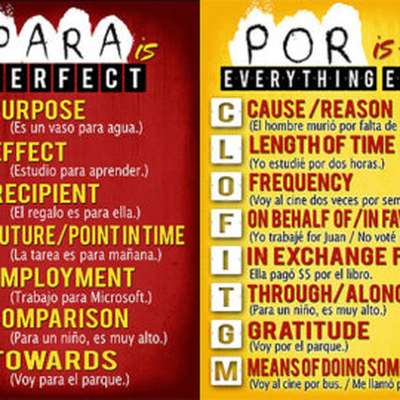
As with all Spanish grammar lessons, it's a good idea to mix in listening and reading with your more focused lessons. It may seem confusing at first, but por and para will become second nature the more you practice. Por todos lados (everywhere, on all sides) Por and para are also used in common phrases. I study Spanish in order to be able to speak with my friends. The homework is for Tuesday.Įstudio español para poder hablar con mis amigos. I leave for Cuba tomorrow.Įste regalo es para Luis.

Because of your fault I arrived to work late. Reason (because of, on behalf of, by means of) Here are some more specific ways to distinguish between the two. For example, someone might say "pa' que" instead of "para que."

In some countries, para is sometimes shortened to "pa" when spoken. Para is more "fixed." It's more focused on conveying destinations or end points. One way to remember when to use por or para is to think of por as "fluid." It focuses on expressing movement through time or space.

The second means that I actually work for Pedro, making him my boss. The first means "I work instead of, or on behalf of, Pedro," meaning I'm taking over his responsibilities. In the two examples "Trabajo por Pedro" and "Trabajo para Pedro," both would be translated as "I work for Pedro." But in Spanish, they mean two different things. These words aren't interchangeable and can cause some confusion when used incorrectly. Spanish has two prepositions that often get translated as "for" in English: por and para.


 0 kommentar(er)
0 kommentar(er)
